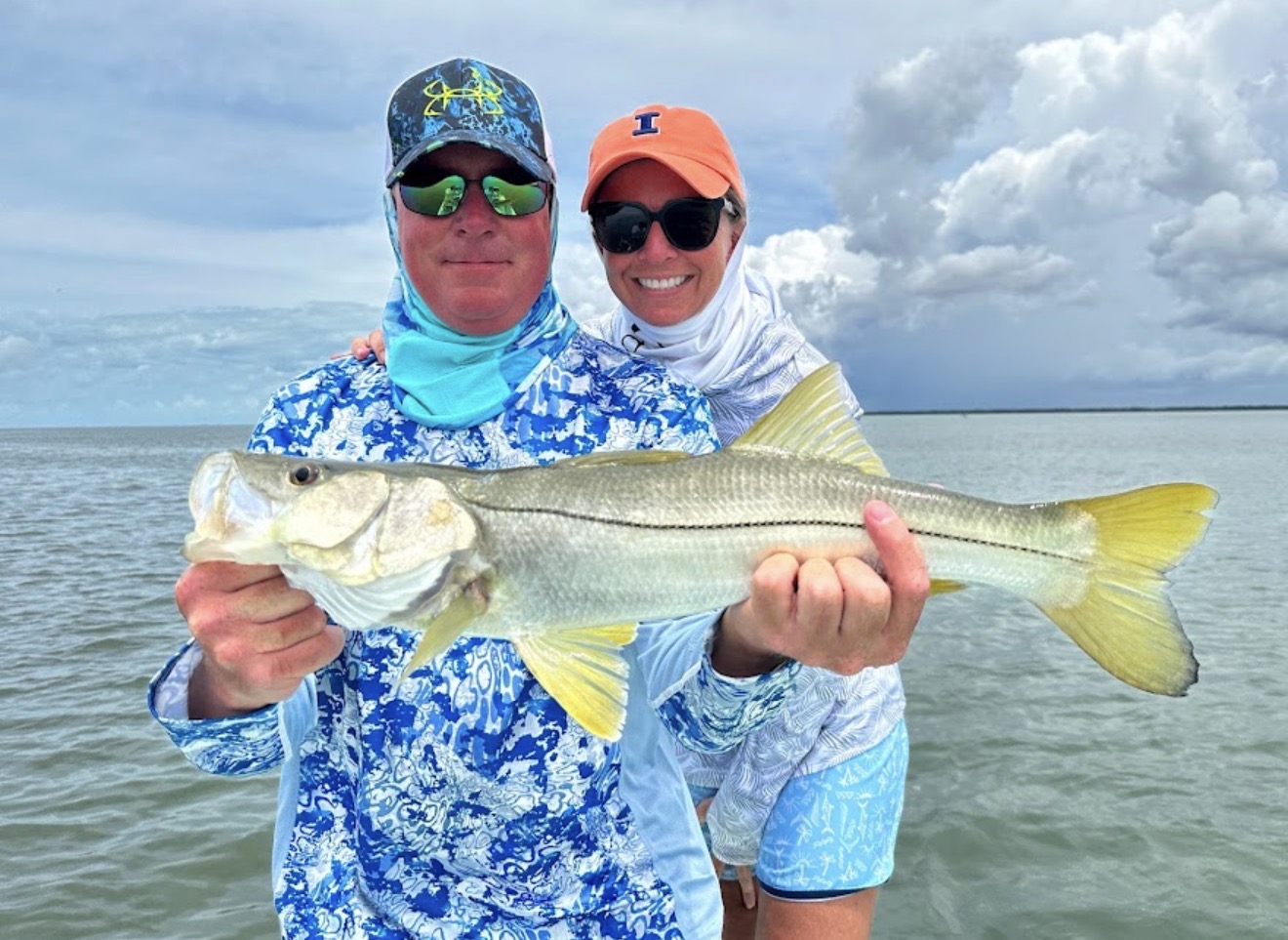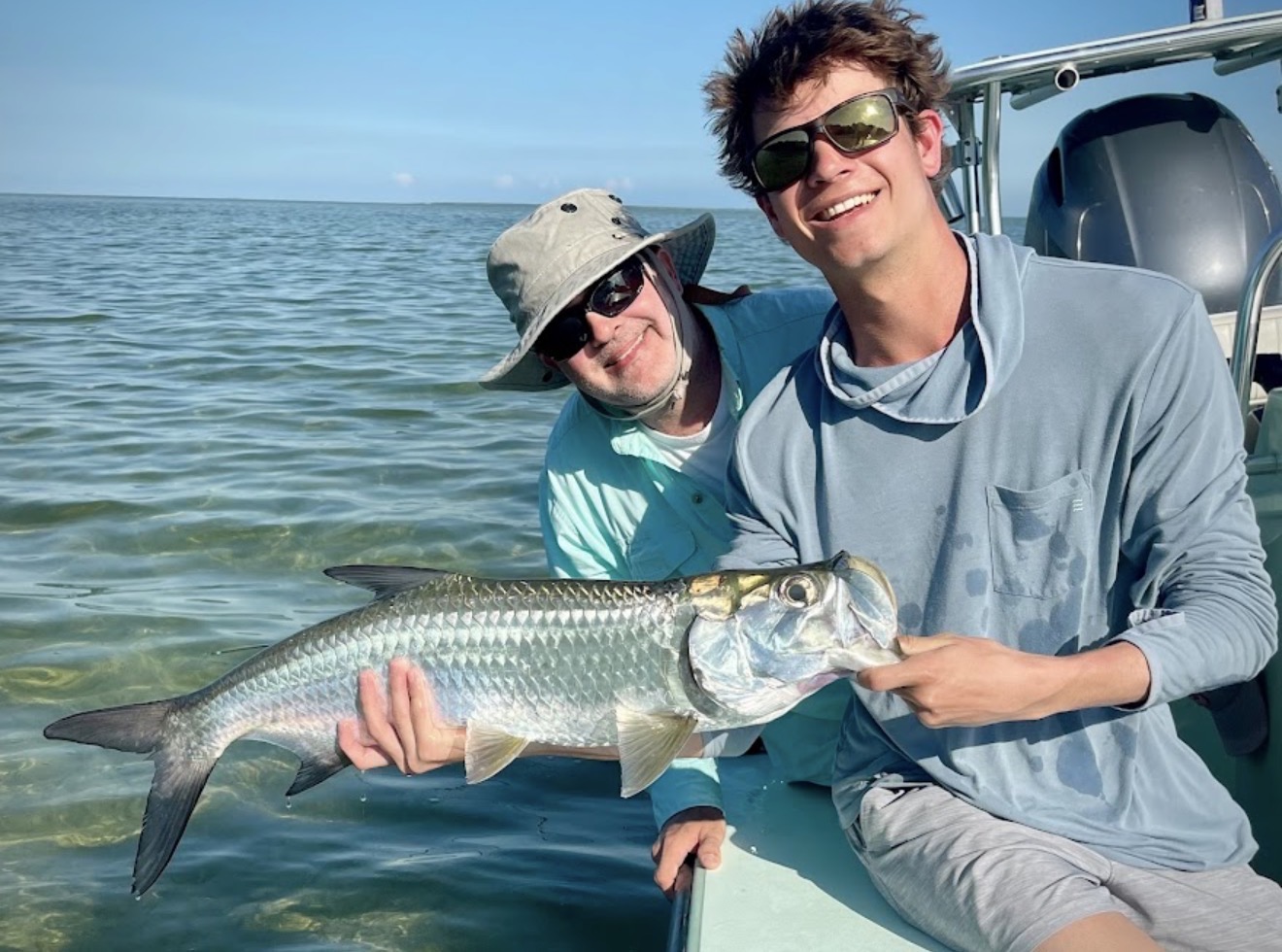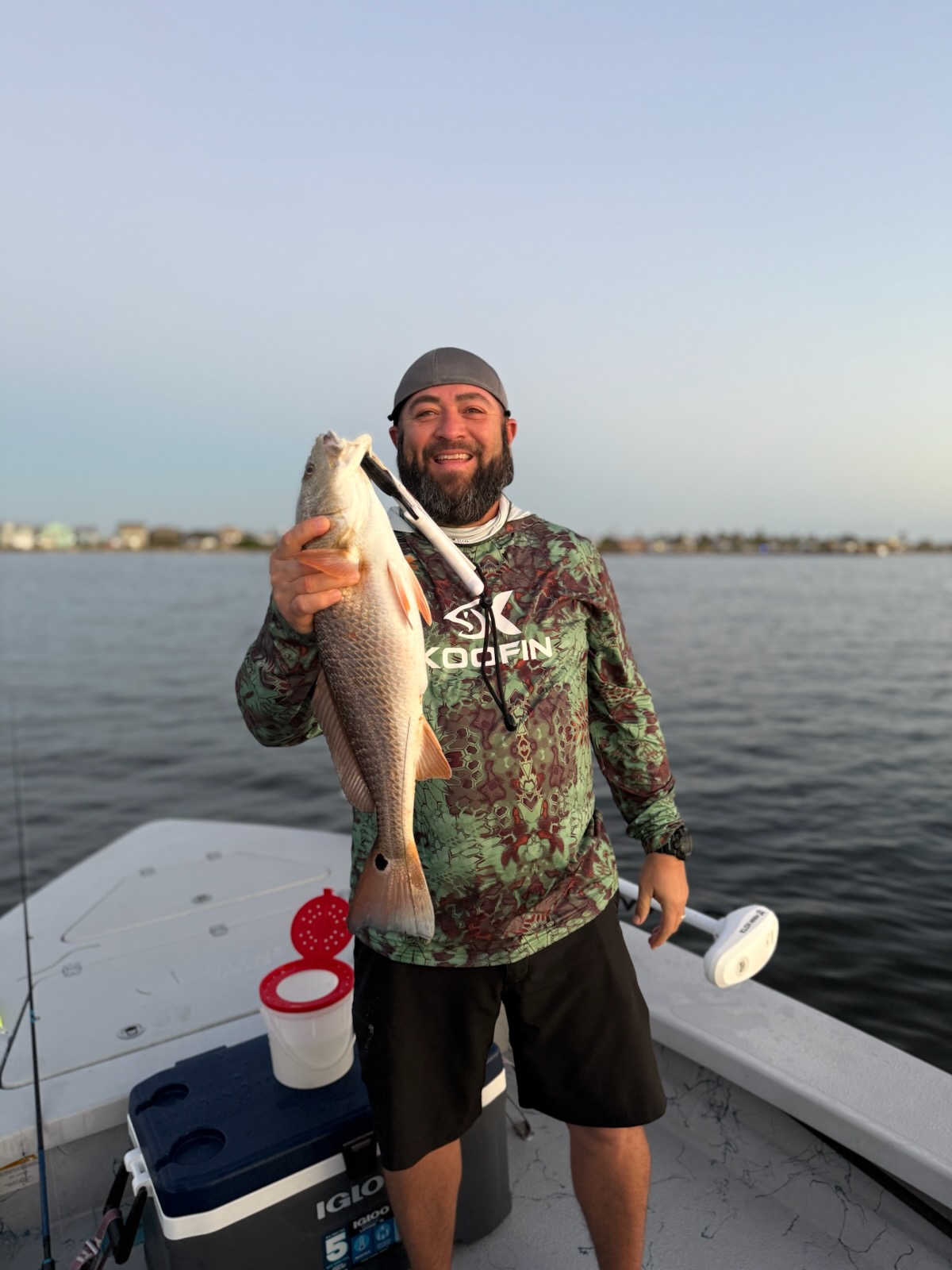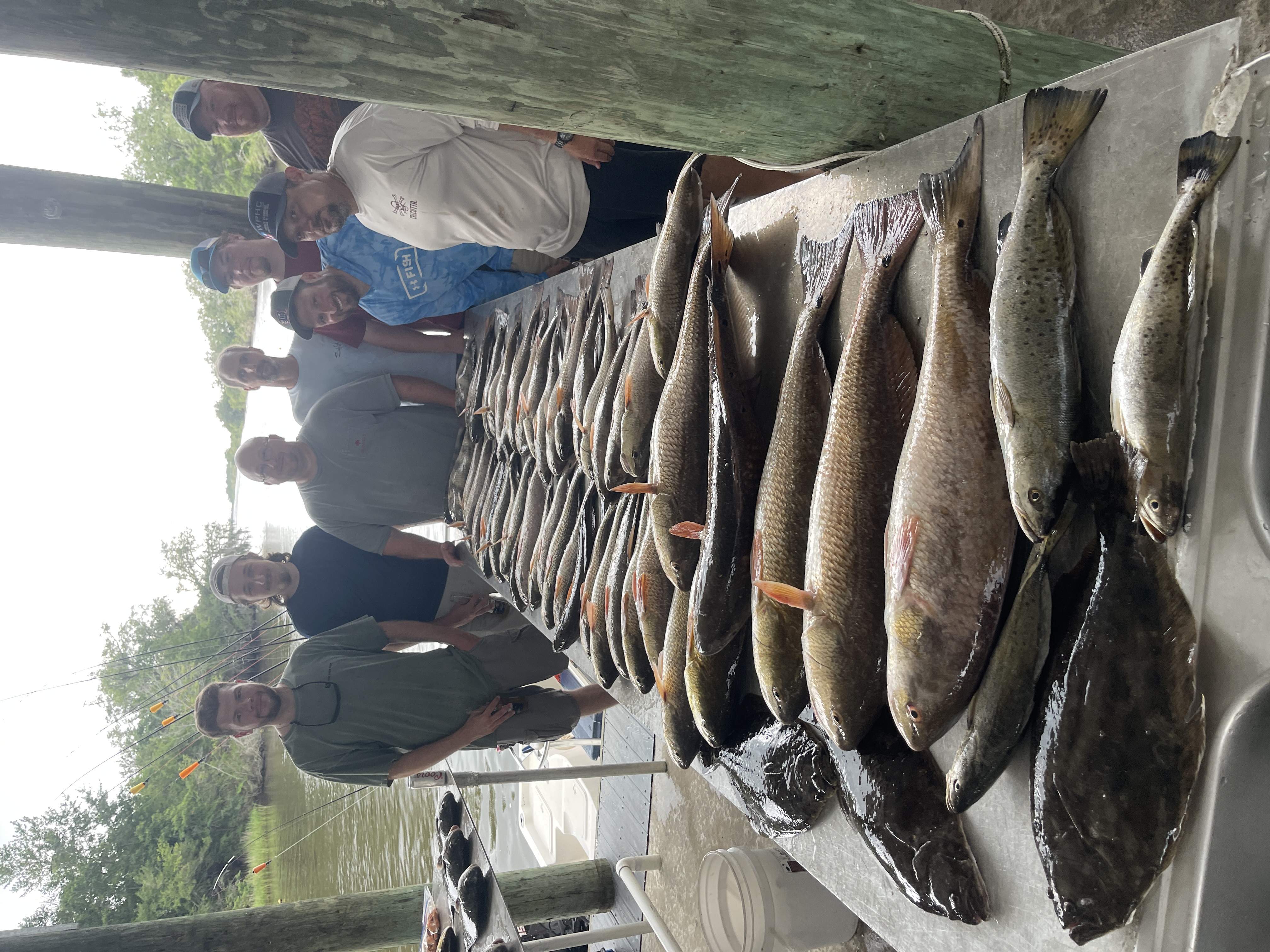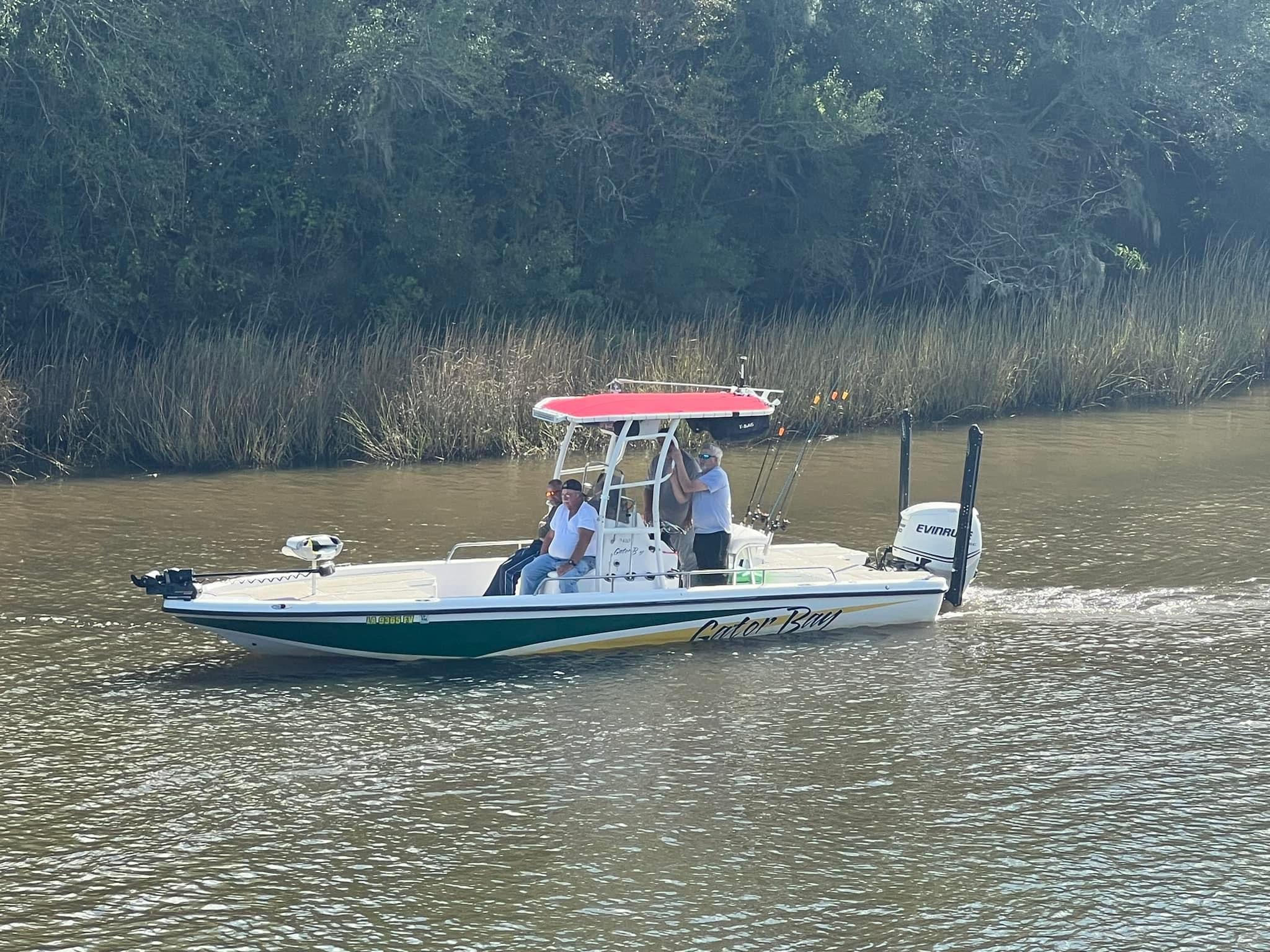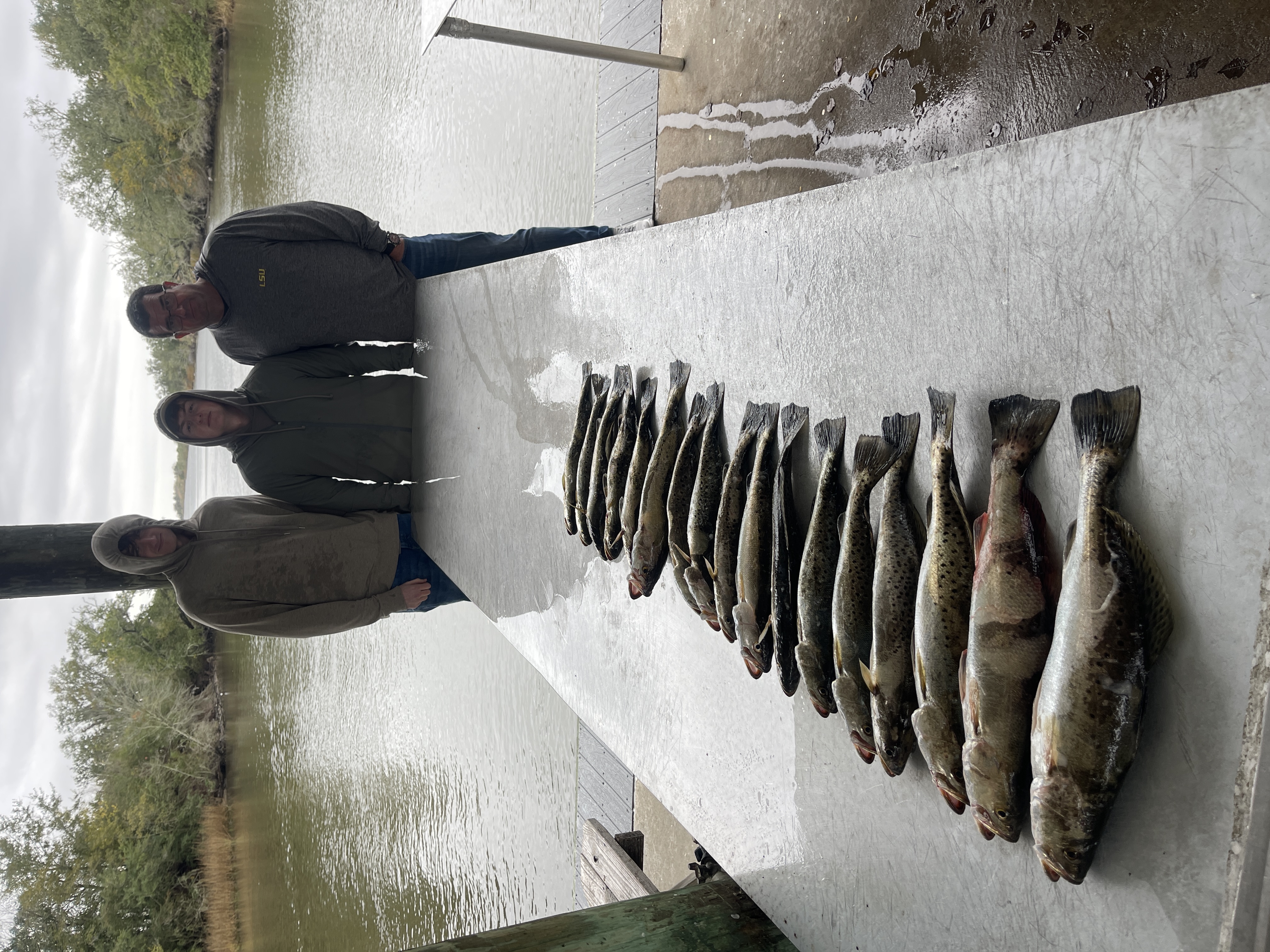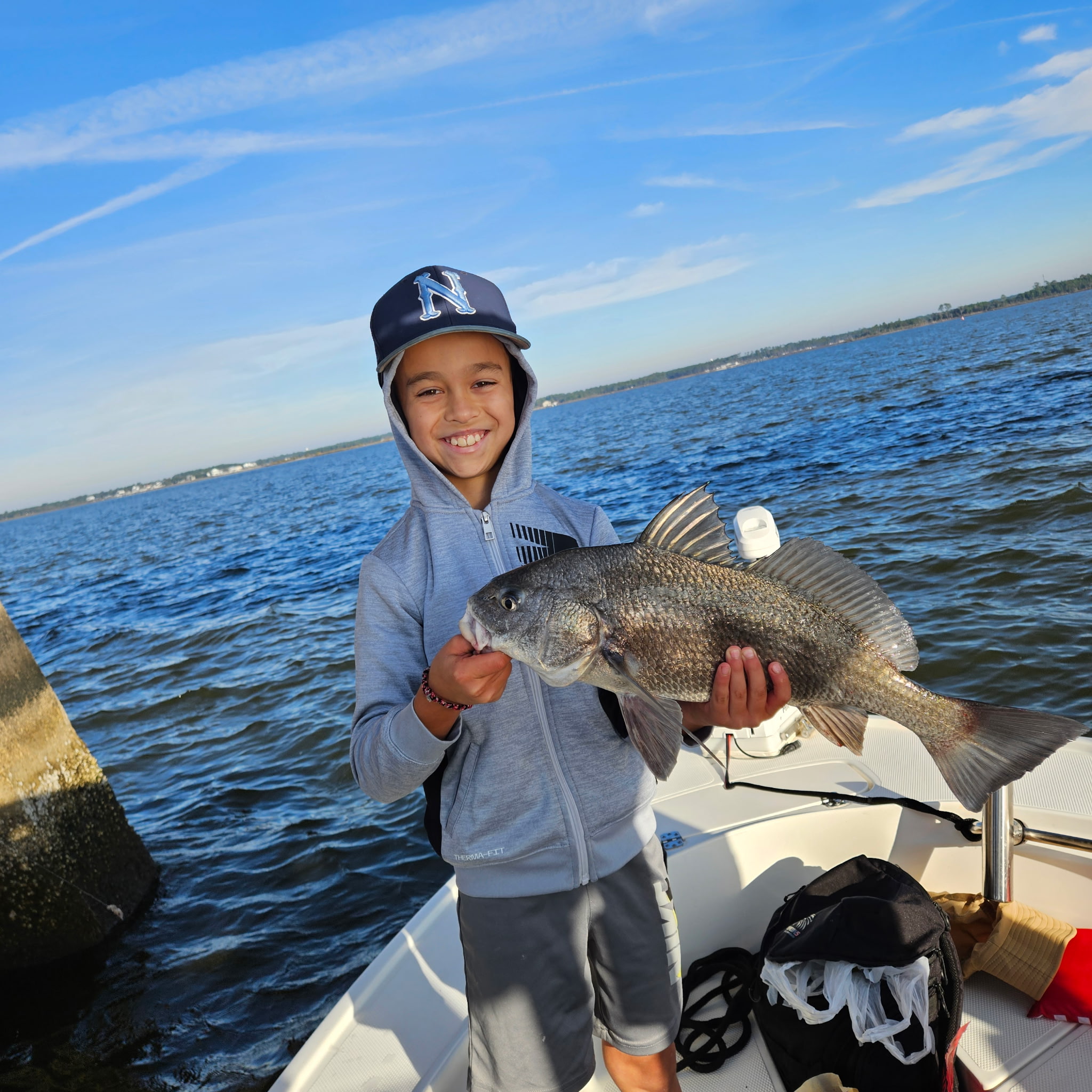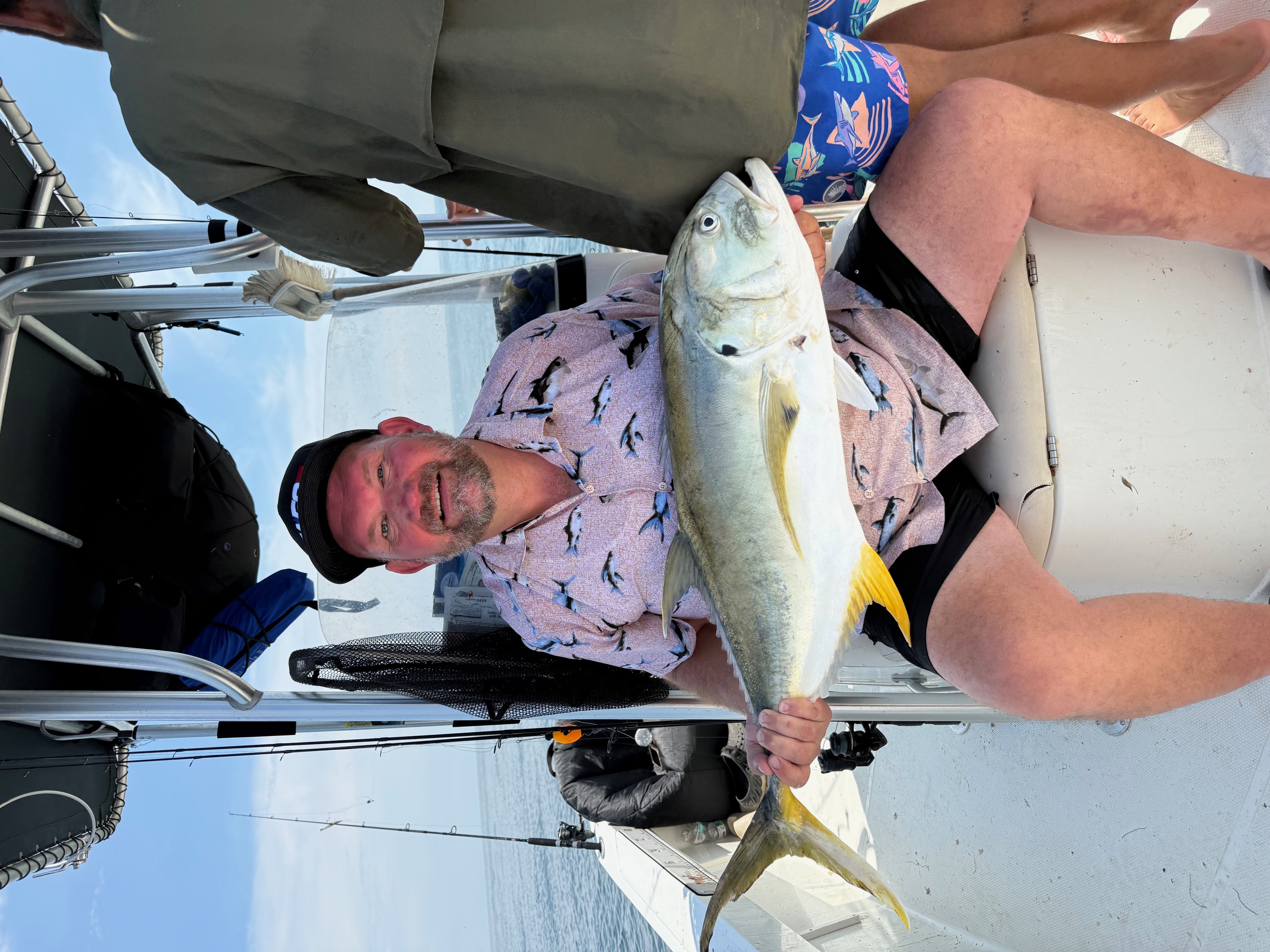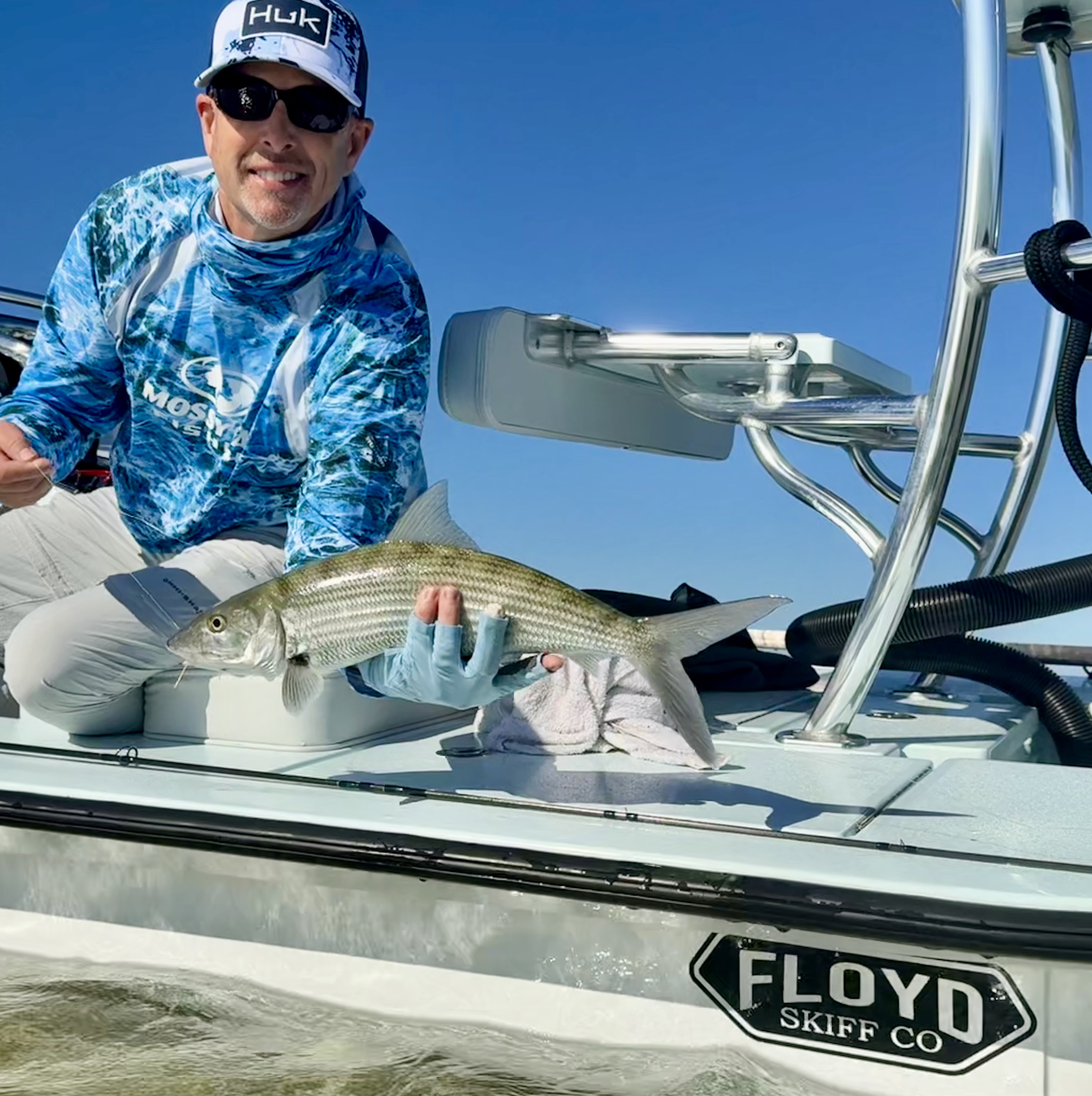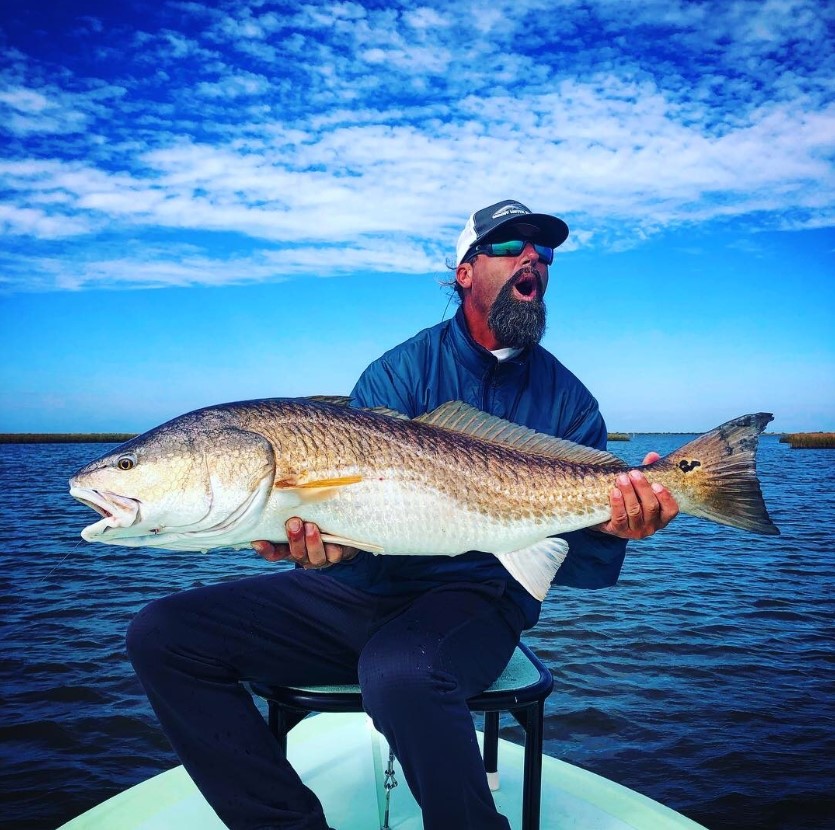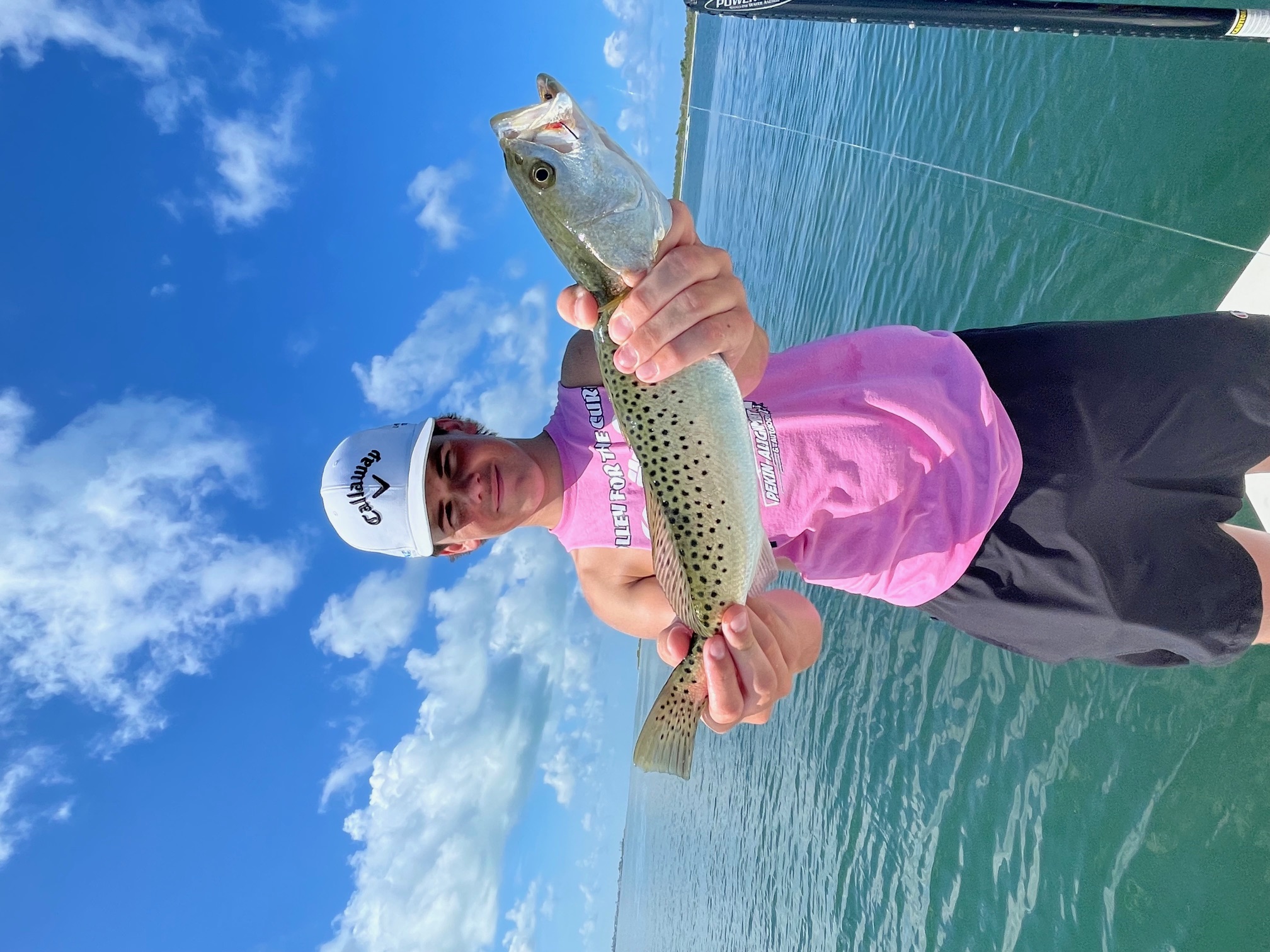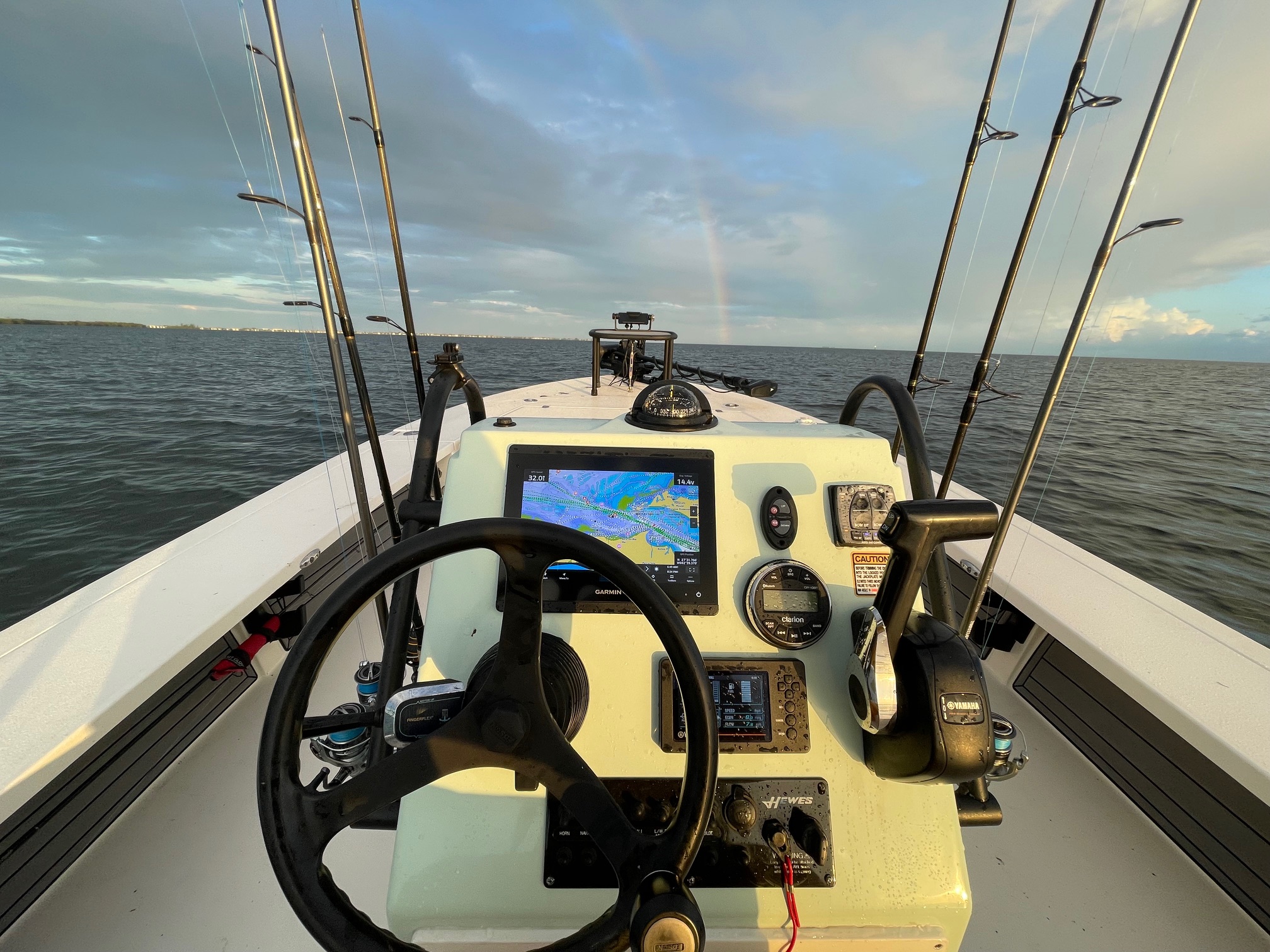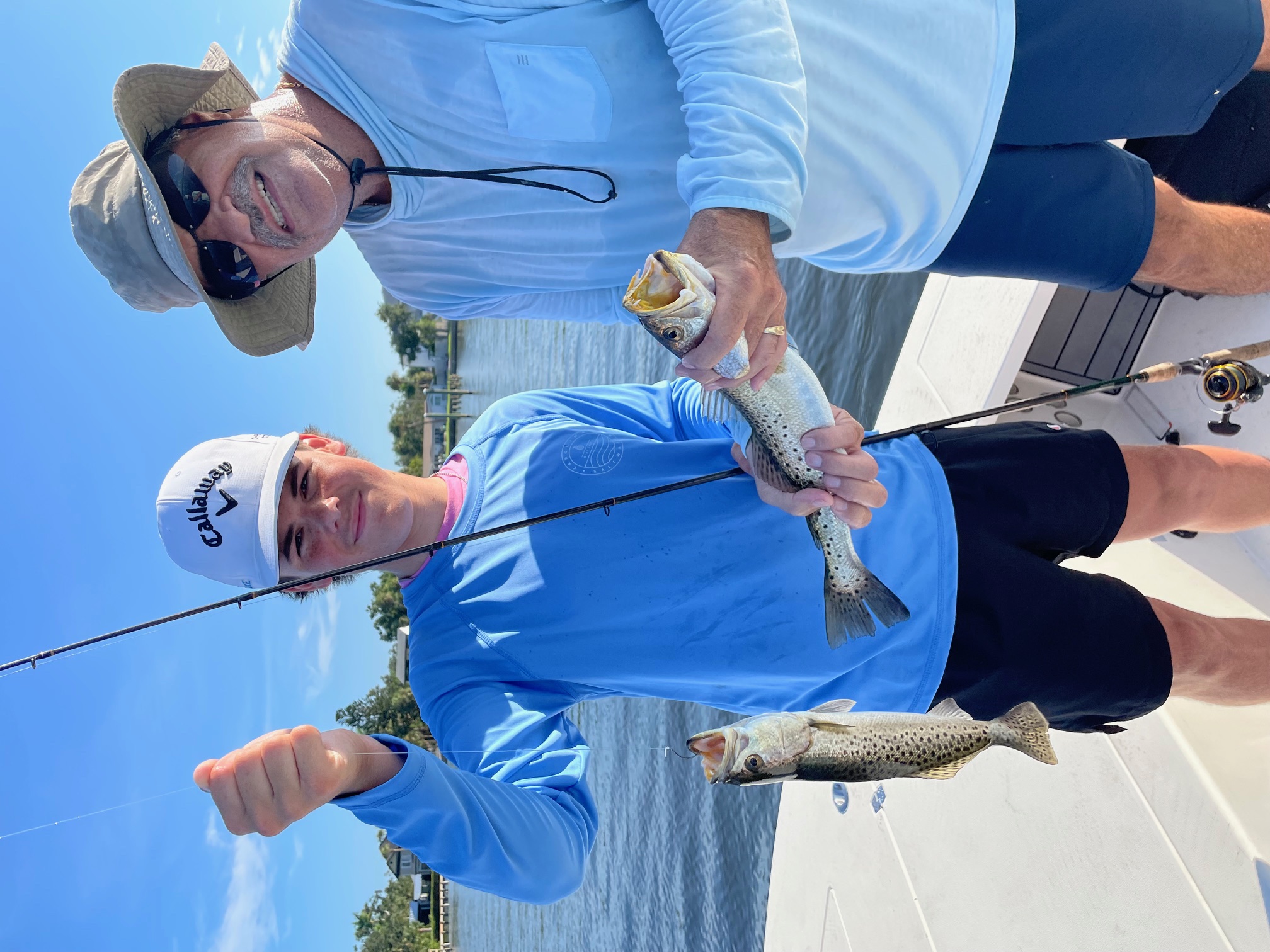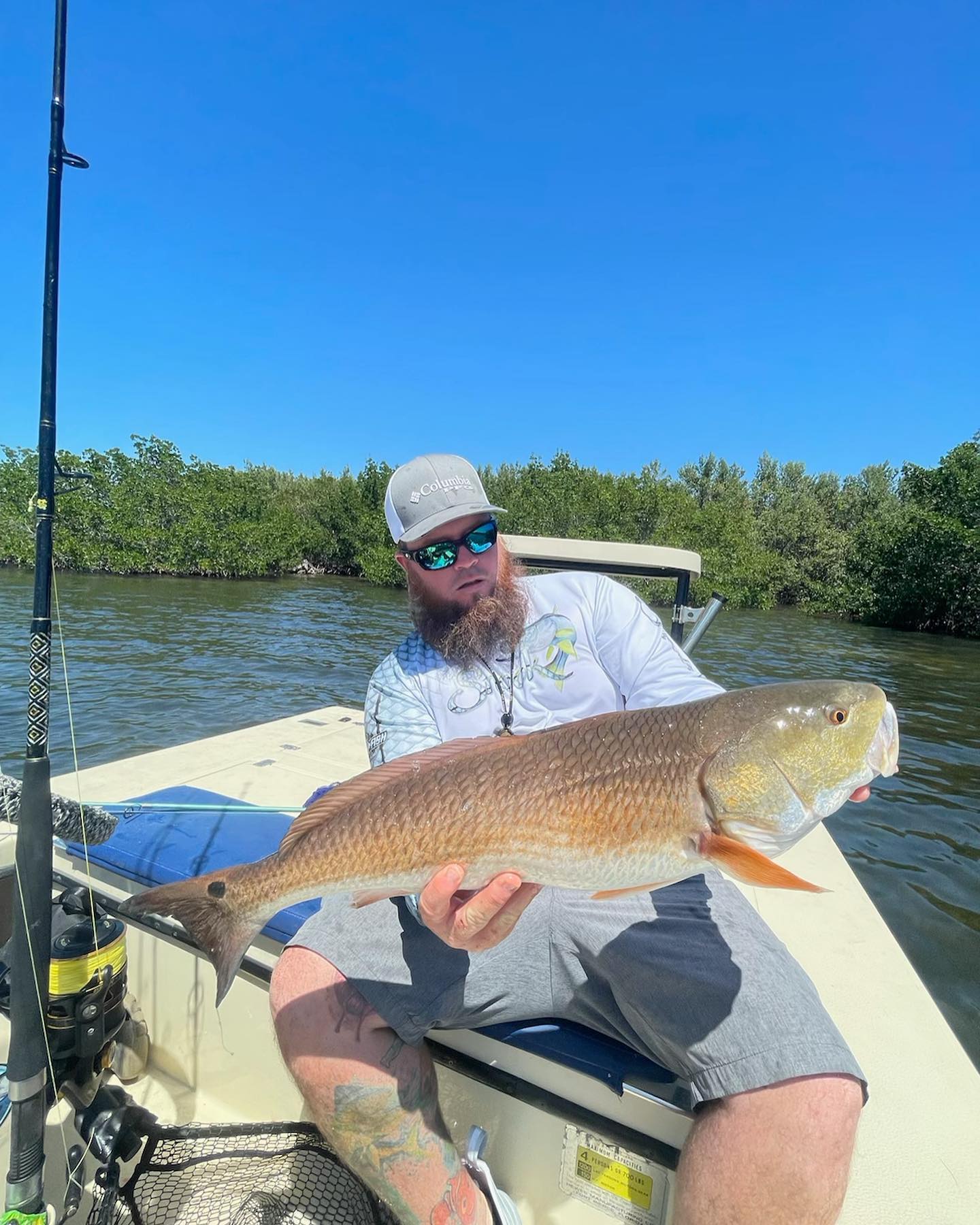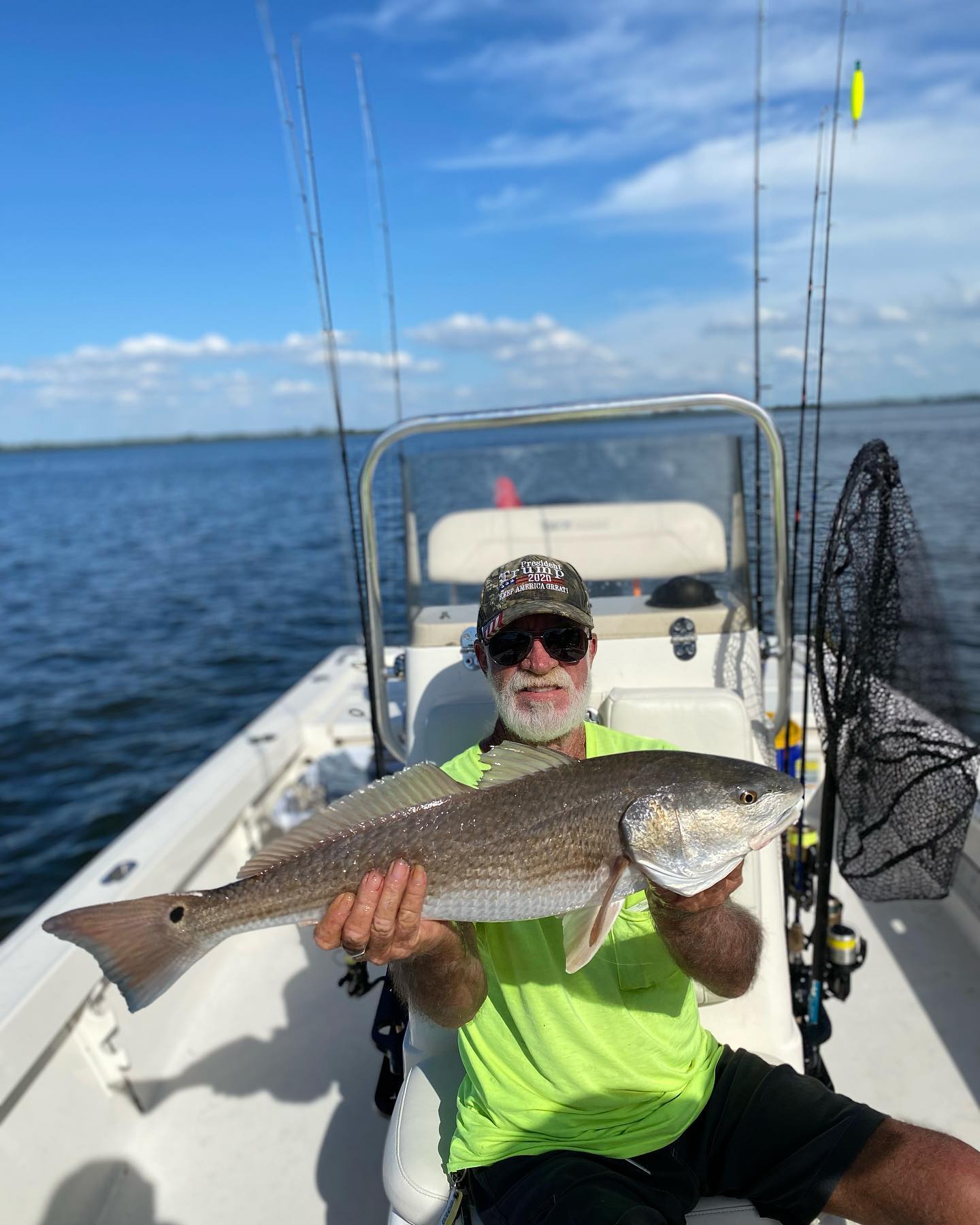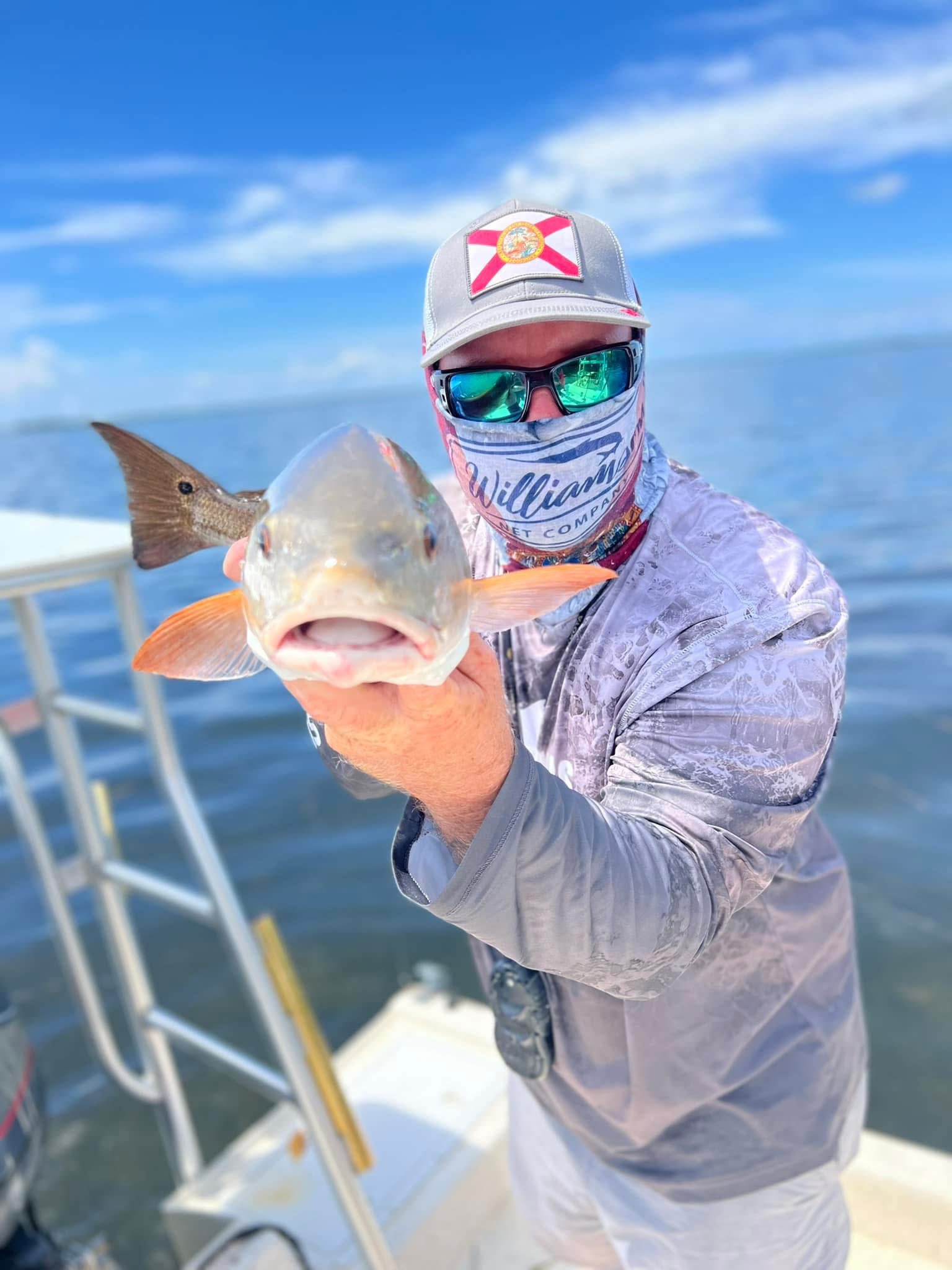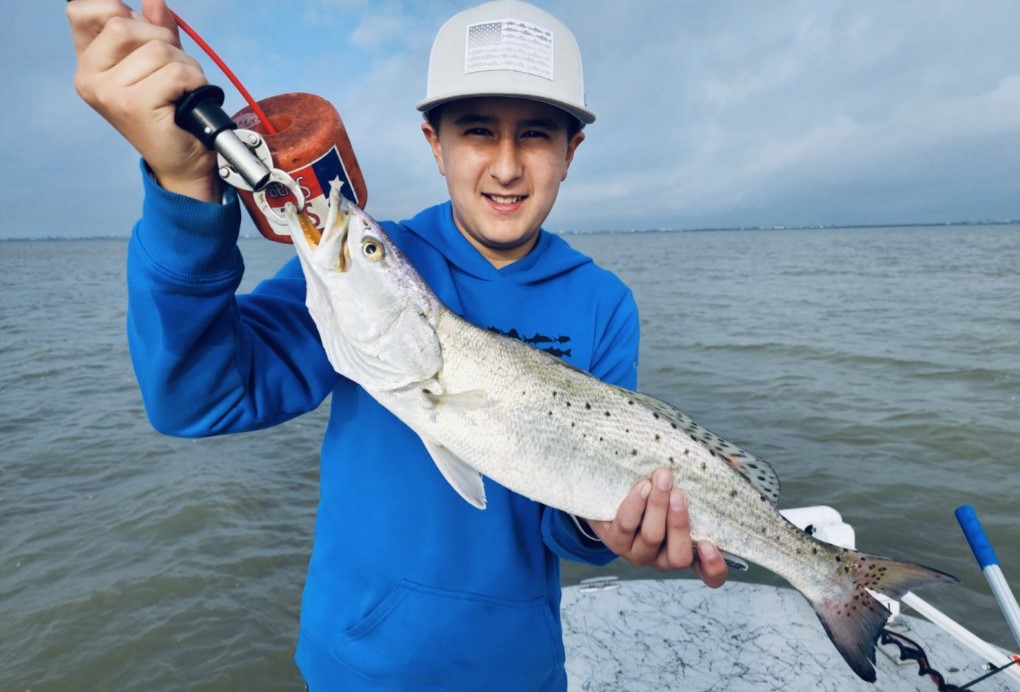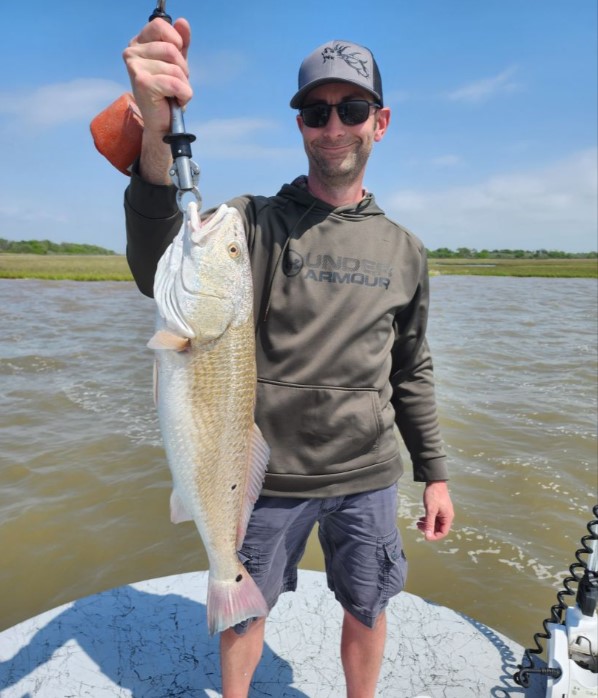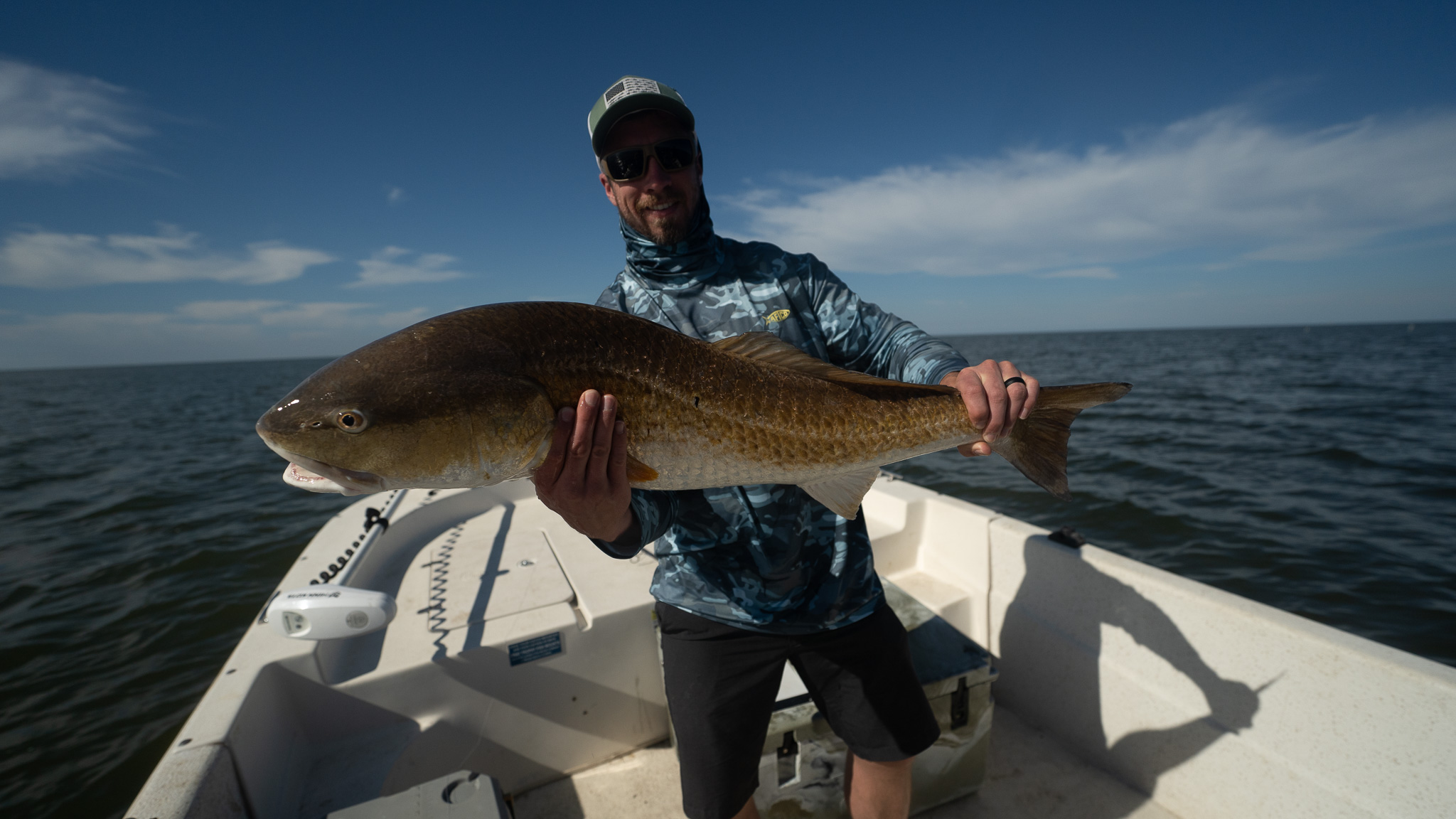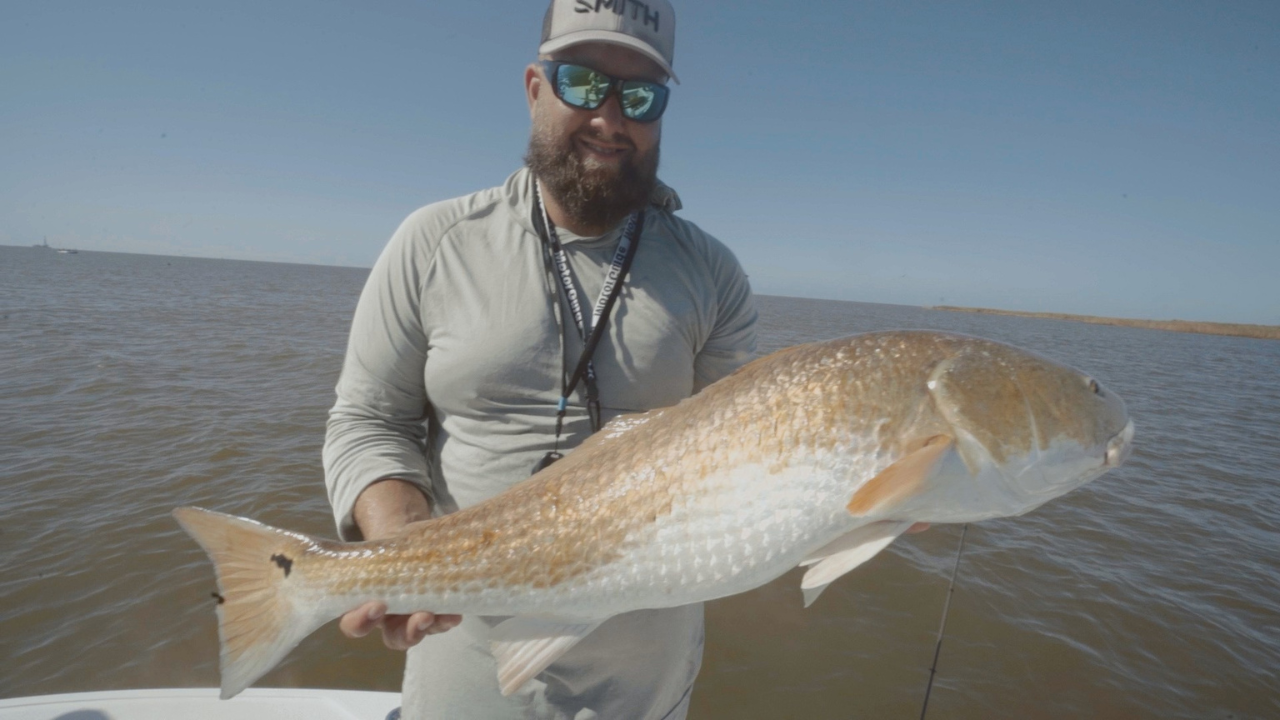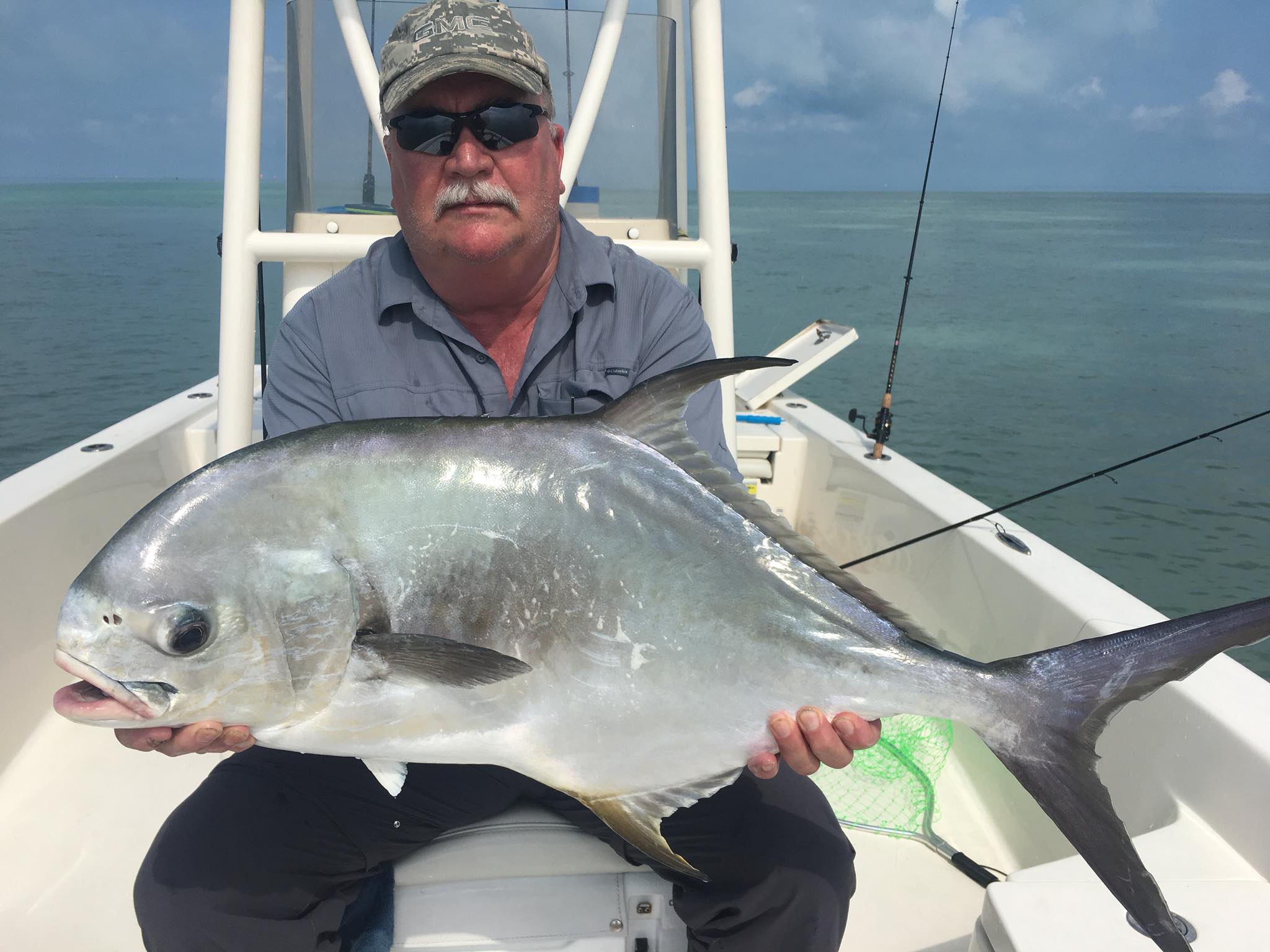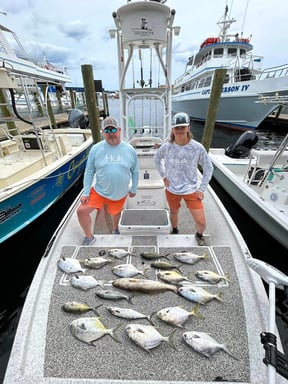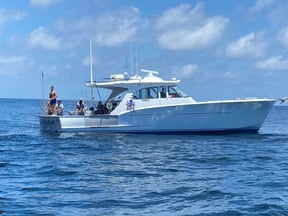Inshore, Nearshore, Flats in Tavernier
Sight Fishing Everglades Natl Park
Inshore Fishing in Corpus Christi
Hook, Line & Memories Fishing Trip
Inshore, Lake, Flats in Saint Bernard
Winter Special
Inshore, Nearshore, Flats in Biloxi
Inshore/Nearshore Fishing Charters!
Inshore, Flats Fishing in Key West
4-8 Hour Inshore Fishing Trip
Inshore Fishing in Holmes Beach
6 Hour Inshore Fishing - Anna Maria
Inshore, Flats Fishing in Bokeelia
Half Day Trip – Inshore
Inshore, River, Flats in Matagorda
Matagorda Bay Fishing Charters
Venice Inshore Fishing Charter
Key West Backcountry Fishing
We started Captain Experiences to make it easy to book fishing and hunting guides around the world. With over 2,000 Damn Good Guides, our platform makes finding and booking a trip seamless. Head here to check out our trips.
Redfish Spots
Let’s talk a little bit about redfish spots. And I’m not talking about spots to catch redfish or spots to eat redfish, I’m talking about the physical spots on their bodies, which can number from 1 up to the point of looking like freckles on the side of the fish (if you catch a particularly unique one). A lot of people wonder whether the spots on a redfish mean anything, or whether more redfish spots means older fish (is it like counting the rings on a tree?), so let’s dive into some red drum biology and find out.
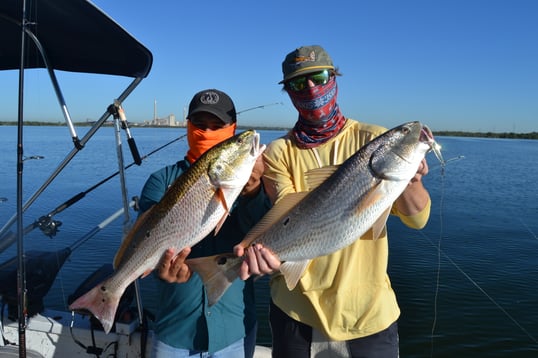
Captain Experiences Co-Founder Attison Barnes and Captain Bryan C. of Calaveras, a freshwater redfish lake in San Antonio, showing the spots of a few redfish.
What are redfish spots for?
Red drum (also known as spottail bass, redfish, or simply reds) are a member of the croaker family of fish and are common across the southern portion of the east coast and gulf coast of the US and Mexico. But redfish are unique from other related fish in that they are both a great game fish to both eat and catch and that they have a unique spot on their tails. But I assume y’all already know what a redfish looks like, otherwise you wouldn’t have found this page, so let’s get into why redfish spots exist.
Most red drum have just one spot on each side, on or near the tail, and above the lateral line. The reason for this is to confuse predators; the rear spots act as a fake set of eyes (similar to what you find sometimes on butterfly wings) that confuse any predators into thinking the fish is swimming backwards because the predator thinks the fish is facing in the wrong direction. Predators of all kinds, from lions to fish, typically attack the head in an attempt to increase the chances of killing their prey quickly and therefore saving energy. Not to mention with fish the advantages of this are even more important, as trying to swallow a fish from behind can increase the chances of it getting stuck in your throat (fish can be bigger towards the front of their bodies, and the orientation of their fins can prevent swallowing from the wrong direction).
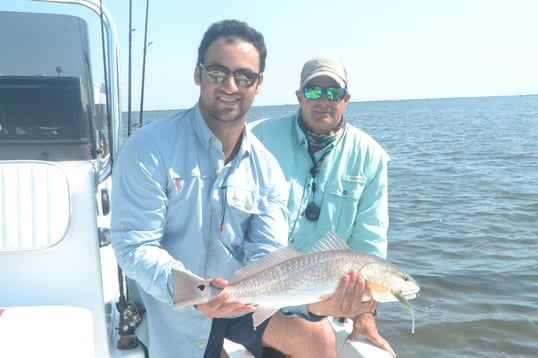
Captain Experiences CEO Jonathan Newar and Captain Larry B. with a typical redfish caught in Aransas Pass, Texas.
So when the predator is oriented the wrong way, either the predator gets confused and the redfish is able to swim away before it is attacked, or the predator attacks the redfish’s tail rather than head, which is an easier attack to heal from - losing part of your behind might make it hard to swim, but losing half of your head certainly puts you at a bigger disadvantage.
Therefore, multiple spots might put the fish at a disadvantage in life by making it harder to avoid predators and stay safe, although it doesn’t seem like drum have been studied enough to prove whether this is the case.
How many spots can a redfish have?
So why do some redfish have so many spots while most only have the typical one on each side? It all comes down to genetics. The dominant gene for redfish is certainly one spot on either side, and this setup seems to have the best advantage for the fish because of the implications for avoiding predators explained above. More spots is typically the result of recessive pigmentation genes - some redfish might have more spots by having two parents that both have recessive genes for more spots despite having a normal amount themselves, or some redfish might be the result of two adults spawning who both have more spots than usual, thus passing that trait onto their children.
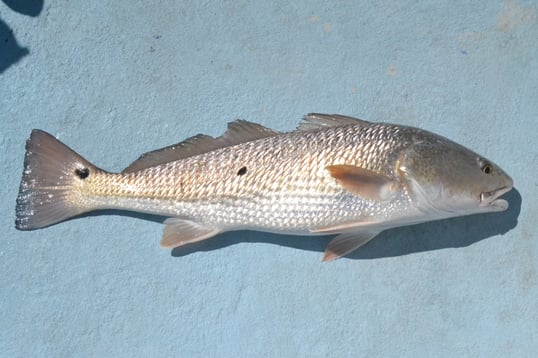
Redfish with a few spots caught on a Rockport fishing charter with Captain Jim G. of Texas
So what are your chances of catching a redfish with multiple spots? While one spot is the most common, two or three spots (per side) can also be seen somewhat regularly. More than that and you are entering rare territory. More than 5 or 6 spots is getting to be truly unusual, and more than 10 is extremely rare (as is a redfish with no spots). The current record (although there are not really official records kept for spots) for most spots on a redfish is 500 on one from the everglades (to me, 500 seems like an awful exact number, I bet they got tired of counting at a certain point). But even one of these “leopard redfish” with a more reasonable 195 spots like this one caught with one of our Damn Good Guides Captain Rodney can earn a good spot in the unofficial record book. You can hear more about this fish in our live interview with Captain Rodney on the Captain Experiences Youtube channel.
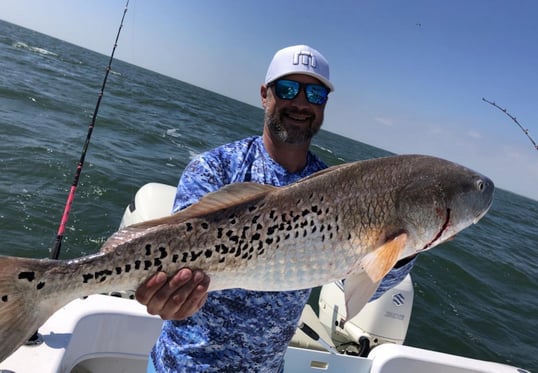
One of Captain Rodney H.’s clients with a 195-spot leopard red caught on a Freeport fishing charter in Texas.
A few more notes on spots: spots aren’t necessarily the same on each side of the fish (a redfish could have three spots on one side and one on the other, for example), spots can be lost as the fish ages (mature fish sometimes absorb more of the pigmentation back into their bodies and the spots fade), and some redfish have no spots at all! Juvenile redfish are not hatched with spots, but your chances of seeing a redfish without spots are slim, most develop them within a few months, and certainly before they are legal at around 3 years of age.
How can I catch my own Gulf of Mexico redfish with a ton of spots?
While nobody can tell you where or how to catch a redfish with tons of spots, Captain Experiences’ Damn Good Guides can help you catch your personal best bull red or even just stock your cooler and we have guides all over Texas and beyond. Catching redfish is popular most of the year in Texas with your chances of catching a big bull red being the highest from September to November.
Want the best chance of catching a big bull red (and maybe one with a bunch of spots)? Our guides pictured above are some of the finest when it comes to catching reds. Take a trip with Captain Bryan C., Captain Larry B., Captain Jim G., or Captain Rodney H. or, if you want to see something in another area, go to the Captain Experiences search page, filter by “Redfish”, and search for your desired location to see some of our top redfish charters and book within minutes.
Attison Barnes
Updated on July 31, 2023

June 28, 2023
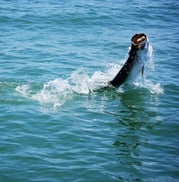
April 15, 2022

March 8, 2022

August 21, 2023

April 26, 2022
Related Articles
June 23, 2023
April 24, 2023
December 22, 2021
Featured Locations
- Fishing Charters Near Me
- Austin Fishing Guides
- Biloxi Fishing Charters
- Bradenton Fishing Charters
- Cabo San Lucas Fishing Charters
- Cancun Fishing Charters
- Cape Coral Fishing Charters
- Charleston Fishing Charters
- Clearwater Fishing Charters
- Corpus Christi Fishing Charters
- Crystal River Fishing Charters
- Dauphin Island Fishing Charters
- Daytona Beach Fishing Charters
- Destin Fishing Charters
- Fort Lauderdale Fishing Charters
- Fort Myers Fishing Charters
- Fort Walton Beach Fishing Charters
- Galveston Fishing Charters
- Gulf Shores Fishing Charters
- Hatteras Fishing Charters
- Hilton Head Fishing Charters
- Islamorada Fishing Charters
- Jacksonville Fishing Charters
- Jupiter Fishing Charters
- Key Largo Fishing Charters
- Key West Fishing Charters
- Kona Fishing Charters
- Lakeside Marblehead Fishing Charters
- Marathon Fishing Charters
- Marco Island Fishing Charters
- Miami Fishing Charters
- Montauk Fishing Charters
- Morehead City Fishing Charters
- Naples Fishing Charters
- New Orleans Fishing Charters
- New Smyrna Beach Fishing Charters
- Ocean City Fishing Charters
- Orange Beach Fishing Charters
- Panama City Beach Fishing Charters
- Pensacola Fishing Charters
- Pompano Beach Fishing Charters
- Port Aransas Fishing Charters
- Port Orange Fishing Charters
- Rockport Fishing Charters
- San Diego Fishing Charters
- San Juan Fishing Charters
- Sarasota Fishing Charters
- South Padre Island Fishing Charters
- St. Augustine Fishing Charters
- St. Petersburg Fishing Charters
- Tampa Fishing Charters
- Tarpon Springs Fishing Charters
- Venice Fishing Charters
- Virginia Beach Fishing Charters
- West Palm Beach Fishing Charters
- Wilmington Fishing Charters
- Wrightsville Beach Fishing Charters
